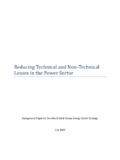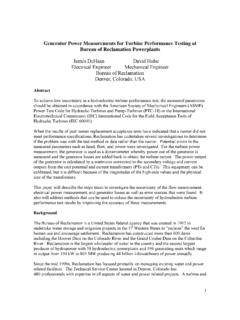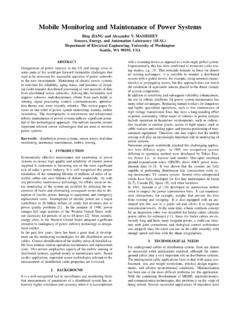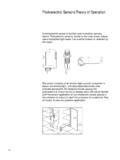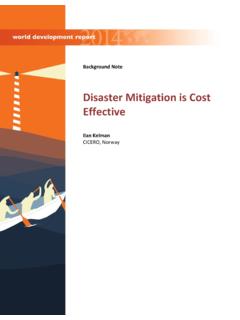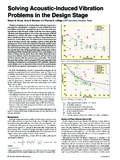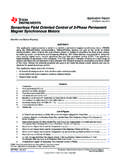Transcription of D-ILA® Projector - JVC Pro
1 D-ILA Projector with Technology DLA-VS2300G/ VS2500G D-ILA Projector with BLU-Escent Light Source (without Lens) DLA-VS2300ZG/VS2500ZG D-ILA Projector with BLU-Escent Light Source (with Lens) JVC is the trademark or registered trademark of JVC KENWOOD Corporation 2 Table of Contents Why are Solid State projectors Needed? .. 3 What is BLU-Escent? .. 3 Ideally Suited for the Simulation Market .. 5 High Reliability Over Long Operating Hours .. 5 Resolution Options .. 6 Very High Contrast and Dynamic Range .. 7 Stable Brightness .. 8 Stable and Calibrated Color Gamut .. 9 Flexible Mounting Orientations .. 10 Safety and Environmental Impact .. 100 Low Cost of Operation .. 100 Great Performance-Value Offering .. 11 Specifications .. 12 3 Why are Solid State projectors Needed? projectors have historically been illuminated by lamps, but the technology to replace these with solid state sources is here today and offering benefits for end users.
2 Lamps need to be replaced with some frequency, they vary somewhat in light output levels, they can t be modulated to deliver deep black levels of high contrast and their use in different orientations and environments is limited. Solid state light sources address these issues. Solid state light sources can be used using four different architectures: 1) All-laser uses red, green and blue lasers 2) Laser Phosphor uses blue lasers and a phosphor wheel to create white or yellow light 3) All LED uses red, green and blue LEDs 4) Hybrid uses a combination of LED and lasers Each of these approaches has its strengths and weaknesses and each can have variations on the implementation to differentiate the product. Solid state light sources can replace lamps in projectors using DLP, LCOS or LCD imagers. In this paper, we will focus on the BLU-Escent Projector developed by JVC.
3 This features an LCOS (D-ILA) light engine with a Laser Phosphor solid state source. The DLA-VS2300 and DLA-VS2500, with their proprietary D-ILA technology, deliver high contrast images with outstanding functionality, making them the perfect LCOS laser Projector solution for simulators. What is BLU-Escent? The BLU-Escent JVC Projector is similar to a lamp-based JVC Projector except that the lamp, which produced white light, is replaced with a solid state light module consisting of a laser block and a phosphor wheel (Figure 1). Figure 1: Key Elements of the BLU-Escent Light Source 4 The laser block consists of 16 high power blue lasers. These are highly reliable and stable for tens of thousands of hours. The blue laser light excites the phosphor which re-emits yellow light, which is later separated into red and green components.
4 These components, along with the blue laser light, provide the illumination needed for the imaging block of the Projector . The BLU-Escent light source is differentiated by its architecture from some competitive approaches. The BLU-Escent engine features a reflective phosphor wheel rather than a transmissive one. As shown in Figure 2, a reflective approach reduces optical loss and increases luminance efficiency. The result is higher contrast as well as high brightness (and increased reliability which we will discuss shortly). Figure 2: Reflective vs. Transmissive Laser Phosphor Wheel Designs Figure 3 shows the full block diagram of the BLU-Escent Projector . The blue light is captured, collimated and passed through a partially reflecting filter. This filter reflects some of the blue light to illuminate the blue D-ILA panel.
5 The rest of the blue laser light passes through the filter to illuminate the phosphor wheel. The re-emitted yellow light contains the red and green components and they are combined with the blue light to be input into the imaging part of the engine. Some simple despeckling of the blue laser light is needed, but the yellow light from the phosphors is speckle free. Figure 3: BLU-Escent Block Diagram 5 The imaging engine block consists of optics and three D-ILA (LCOS) reflective panels that are illuminated by red, green and blue light. After modulation at each panel, the three components are combined and projected through the lens. D-ILA panels are known for their high performance and ability to create very high contrast images. Ideally Suited for the Simulation Market The training and simulation markets are very demanding in terms of performance for the visual system.
6 These systems need to: Provide high reliability over long operating hours Remain stable and calibrated in brightness and color gamut Offer sufficient brightness and resolution Provide very high contrast and dynamic range for low light or NVG operation Be flexible in their mounting orientation Offer good efficiency and cost of operation Provide a great performance-value offering The DLA-VS2300 and DLA-VS2500 build upon JVC s long legacy of providing projection solutions that meets these needs but they raise the bar in several key areas. That s why these projectors represent the very best product that JVC has yet offered to this community. Let s take a look at each of these requirements to show how the DLA-VS2300 and DLA-VS2500 meets the needs of this market. High Reliability over Long Operating Hours projectors used in a simulation or training environment are routinely used over 20 hours a day, 7 days a week.
7 That means all components, including the Projector , need to have very high reliability to be operational with minimal downtime. The BLU-Escent DLA-VS2300 and DLA-VS2500 projectors meet this requirement. In a lamp-based Projector , the lamp is the component that requires constant maintenance and regular replacement. In the laser-phosphor design of the BLU-Escent projectors , there are different lifetime concerns. These are the lifetime of the blue lasers and the phosphor coating on the wheel. The phosphor material can see reduced conversion efficiency over time, but the main degradation mechanism is heat. Therefore, the key to longevity is proper thermal management. JVC uses an aluminum substrate for the phosphor wheel for two reasons. One, a reflective mode offers fewer optical losses for higher efficiency, and two, it offers high thermal conductivity to quickly 6 remove heat generated in the phosphor.
8 In addition, JVC uses a dedicated fan to keep air blowing over the phosphor wheel to maintain a nearly constant temperature. This reduces phosphor aging but also helps to maintain stable light output levels. Finally, JVC has designed a robust phosphor wheel using ball bearings to ensure vibration-free spinning. This means mechanical failure is unlikely, allows operation in any orientation, and even helps to maintain color balance of the light output. The blue lasers are semi-conductor devices that generally degrade slowly over time. But, if one device should fail catastrophically, there are several blue lasers still operating so the Projector can still continue to output light (Figure 4). Figure 4: A Lamp Failure Causes a Dark Screen but a Laser Diode Failure only Reduces Brightness During its long service life, in the unlikely event that the laser itself suffers an outage, our professional maintenance staff will simply swap out the LD (Laser Diode) engine for a new one, with no need for any adjustment or These new units feature a highly efficient heat sink, which is not affected by Projector orientation and is resistant to vibration.
9 Compared with the heat pipe approach, which is dependent on orientation, the new approach offers much more stable cooling performance. Overall, JVC guarantees the light source (lasers plus phosphor wheel) will last over 20K hours to 50% of brightness in the most demanding operating environments. That s high reliability. Resolution Options Resolution is also an important factor in Projector choice. It turns out that the vast majority 1 The cost of replacement will be in accordance with your service agreement and/or warranty 7 of simulation systems today use about three channels with 1920x1080 resolution. Therefore, a Projector with 1920x1080 resolution will satisfy the needs of most projects. The BLU-Escent DLA-VS2300 offers this 1920x1080 resolution while the DLA-VS2500 offers the same resolution panels, but with JVC s e-shift technology.
10 This technology works by having the IG create optimized 1920 x 1080 A and B sub-frames from a 3840x2160 image buffer. The subframes are projected sequentially, optically shifted pixel in both horizontal and vertical directions, alternating at a rate of 120Hz for 30Hz or 60Hz content. The viewer s eyes blend the A & B subframes together to create an enhanced resolution image. This image gives less jaggy edges, round circles and circular light points and reduces anti-aliasing. Very High Contrast and Dynamic Range The JVC BLU-Escent projectors offer very high contrast and dynamic range. For simulators, that can be the difference between usable and unusable. For example, one key application is landing in fog or low light levels where pilots key on seeing runways or other lights to aid in landing. If the contrast is not high enough, the pilots cannot distinguish the lights from the background, making it difficult to see the landing lights in a CAT III scenario, compromising the simulation.
